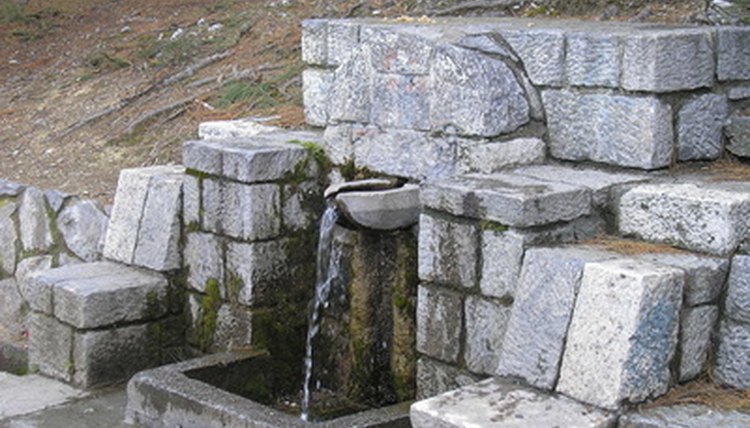How to Develop a Spring for a Drinking Water Source

If you live in a rural or underdeveloped area, a spring may be your best natural water source. But using a spring for your water isn't as simple as collecting or diverting it. To use the spring water, and to keep it safe for use, you'll need to protect it from contaminants introduced by animals or through other sources. Develop your spring for use as a water source by controlling its flow. You can develop a spring in several different ways.
Develop a Concentrated Spring
Dig out the area around the spring, starting up the hill from the spring to a point where the water flows at least three feet underground, or at a point where you hit rock underneath the soil.
Line the area with gravel to make a gravel bed. The gravel bed will form a reservoir to intercept the flow of water.
Install a cutoff wall made from concrete or plastic on the downward side of the slope. Install a cutoff wall of concrete or plastic. Add in a pipe at a low point in the cutoff wall to collect and channel water into the spring box. Ensure the water will not back up behind the cutoff wall.
Develop a Seepage Spring
Dig several tester holes uphill from the seepage spring. Find the point where the layer of earth below the water-bearing layer is about three feet from the surface.
Dig a two-foot-wide trench across the slope to a depth of six inches below the water-bearing layer and extending four to six feet beyond the seep area on each side. Lay down a four-inch collector tile and fill the area around the tile with gravel.
Connect the collector tile to a 4-inch line that leads to the spring box. The opening for the box needs to be below the level of the collector tile.
You'll need to locate a spring box. It should be watertight and have a tight-fitting cover. It needs to be at least four feet tall and should rise at least one foot above the ground when buried. The spring box should come with an outlet pipe and an overflow pipe.
Tips
You may want to take additional steps to prevent your spring water from contamination. This includes diverting all surface water far away from the spring, constructing a drainage diversion ditch to divert surface runoff and fencing an area at least 100 feet around the spring in all directions.
References
Writer Bio
Michelle Labbe has been writing online and for print since 2004. Her work has appeared in the online journals Reflection's Edge and Cabinet des Fées as well as in Harvard Book Store's anthology, "Michrochondria." She is pursuing a Master of Arts in publishing and writing at Emerson College.
